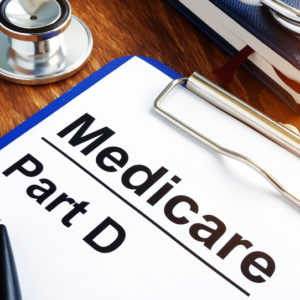Policymakers in Washington can sometimes inadvertently fumble around like a bull in a China shop. Typically, lawmakers on the Hill do so with good intentions and without intending to break valuable things, but they sometimes do. Congress is currently threatening such damage to seniors and the broader healthcare system in their desire to “redesign” the valuable Medicare Part D prescription drug program.
The Medicare Part D program is an important drug insurance program for America’s seniors that is funded from multiple stakeholders in our healthcare system. The federal government, drug manufacturers, health plans and beneficiaries all chip in to fund the Part D benefit for seniors, but they do not do so uniformly. Each actor’s share of funding changes depending upon a beneficiary’s income as well as the amount that has been spent on a specific beneficiary’s drug coverage. So, as patients access their benefit and spend more on prescription drugs, each of these funders is required to chip in varying amounts.
For example, in 2022, once a Medicare Part D beneficiary and his or her health plan has spent $4,430 on prescription drugs, drug manufacturers must then pay 70 percent of the cost of the benefit beyond that $4,430, with the patient kicking in 25 percent and the health plan paying 5 percent.
Medicare patients with lower incomes receive more generous subsidies under the Low-Income Subsidy (LIS) program in Part D. And the LIS program is financed differently than the non-LIS benefit. For non-LIS patients, drug manufacturers pick up a significant share of the costs above $4,430 but for LIS patients, drug manufacturers have no liability. The entire cost of the LIS program is paid for by the government, health plans and beneficiaries themselves.
There are a number of proposals in Congress that would redesign the financing of the Medicare Part D benefit, including drug provisions in the president’s Build Back Better Act. The common denominator in these proposals is that they would all increase drug manufacturer liability in some way. While these congressional proposals derive from worthy intentions to save money for the taxpayer and the seniors who rely on prescription drugs to manage their health, a problem arises because these proposals would not increase manufacturer liability uniformly. Some proposals would give manufacturers modest liability in the early stages of the benefit and more significant liability later in the benefit. Also, all current proposals to redesign the Part D benefit would extend manufacturer liability to the LIS program for the first time.
As one would expect, seniors with certain chronic conditions will spend more on drugs than others. For example, patients living with mental illness, HIV/AIDS, epilepsy, rare diseases and cancer are likely to have higher prescription drug costs than other patients who rely less on the benefit to manage their health. Yet, from a business perspective, if you increase manufacturer liability disproportionately for certain drugs, one could expect that research and development projects that fueled the efforts to discover these types of drugs would be less attractive to the innovative drugmakers who are leading those efforts.
After all, drug manufacturers do not fund only research projects based upon medical need (although that is a significant factor), but they must also have some evidence that the drug candidate will turn a profit and allow the same company to continue such efforts — whether in the same disease state or another.
But if Medicare Part D is redesigned in such a way that products for certain conditions draw significantly more manufacturer liability, research projects in those therapeutic areas are going to be disadvantaged when business decisions are made about R&D.
A recent analysis found that 2019 legislation containing a higher manufacturer liability in the catastrophic phase would increase manufacturer costs for antivirals used to treat conditions such as HIV by 497 percent and for anti-neoplastics commonly used to treat cancer by 374 percent. Under current Medicare Part D redesign proposals, those numbers would nearly triple. A separate report tells us an unbalanced Part D redesign could increase costs to manufacturers supplying treatments for rare disease from 400 percent to 2,000 percent. It is not clear if the members of Congress supporting such redesign proposals are aware of these unintended consequences, but they should be.
Other than providing their products at a fair and reasonable price, it is not clear why drug manufacturers should be responsible for financing an insurance product. Home builders, after all, do not finance homeowners’ insurance, nor do automakers fund auto insurance. But, if Congress, in its wisdom, feels strongly that drugmakers must be financiers of the Medicare Part D program, Congress should at least structure the financing in a way that does not disadvantage research projects in certain disease areas, especially important diseases such as epilepsy, cancer and HIV/AIDS.
If Congress wants to restructure liability in Medicare Part D, it can accomplish the task by applying manufacturer liability evenly and uniformly across the benefit. Congress should avoid a Rube Goldberg financing structure where liabilities vary considerably at different stages of the benefit and for different types of patients.
The future viability of the premier drug insurance program for seniors and innovative scientific research are at risk if the government puts its thumb on the reimbursement scale.

